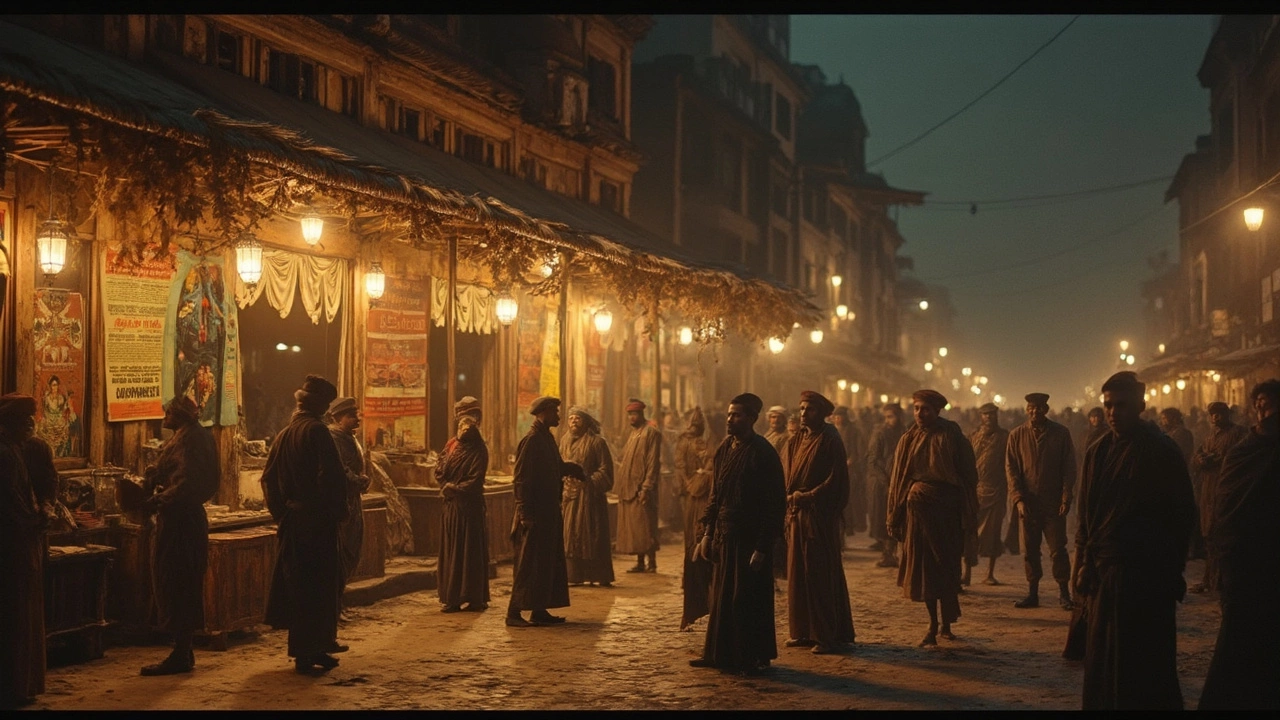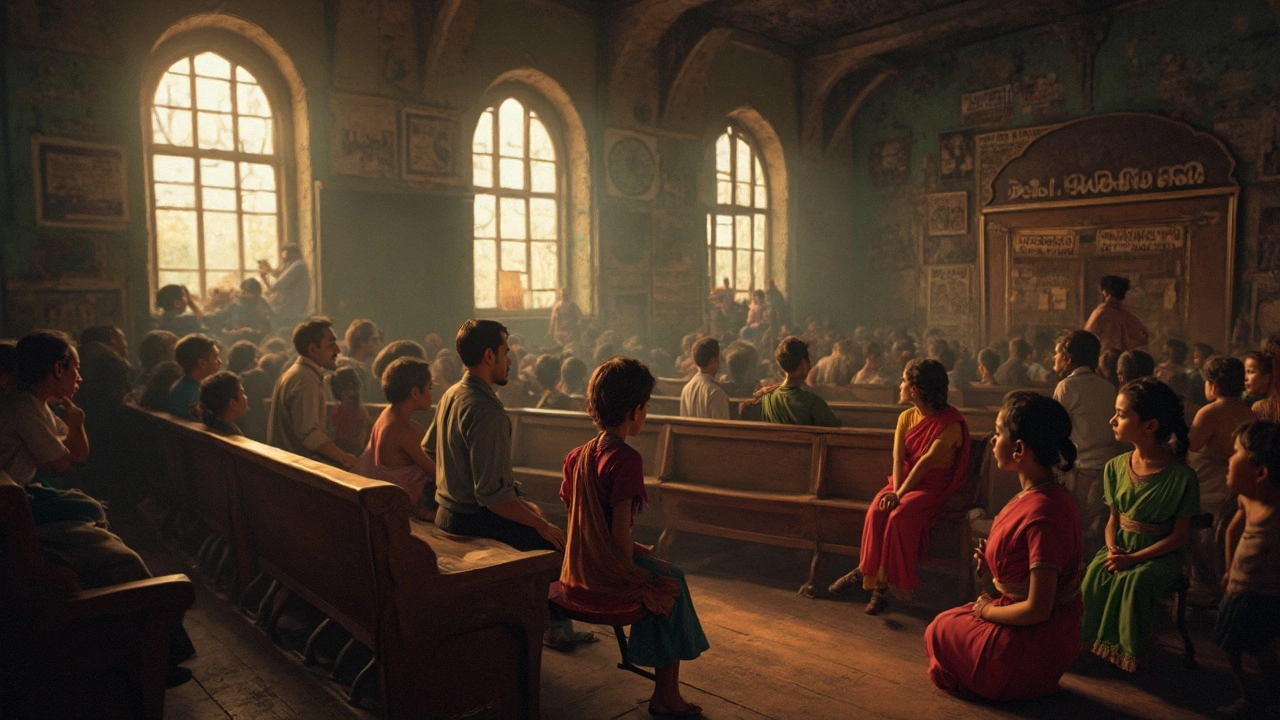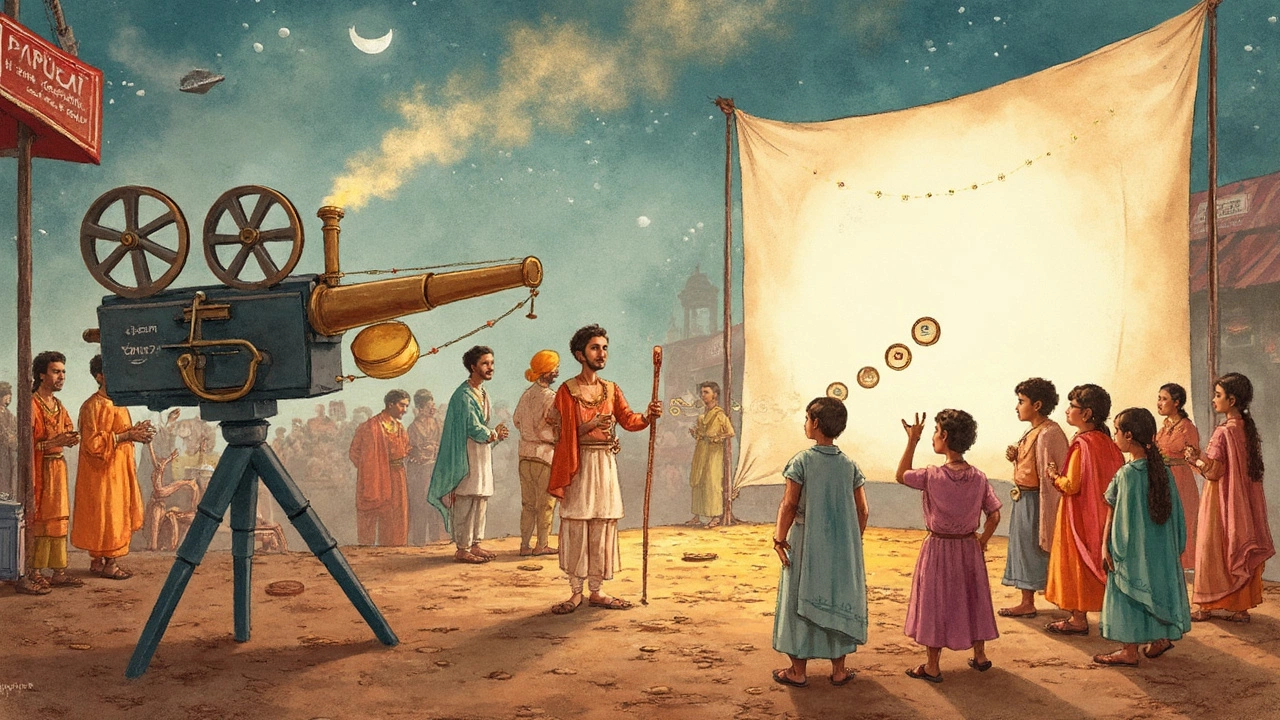What's the Oldest Movie Ever? The Real Story Behind Early Box Office Hits
 May, 9 2025
May, 9 2025
Ask someone “what’s the oldest movie ever?” and you’ll usually get a debate, not a clear answer. That’s because movies didn’t start out as massive blockbusters with sold-out theaters. The earliest films? Single scenes, a few seconds long, no plot, and often just someone sneezing or a train pulling into a station.
But here’s where it gets interesting: even these tiny films had paying audiences. Cinema was a business right from the start. People lined up, tossed coins in a box, and the ‘box office’ was born before anyone even dreamed of special effects or Hollywood red carpets.
If you’re hoping for a massive box office number from the 1800s, you’ll be disappointed. The money was real, but the records are all over the place. Still, there are a few old movies that did attract big crowds—and even managed to rake in some impressive cash for their time.
- Breaking Down 'Oldest Movie'—What Does It Actually Mean?
- Paying to Watch: The Birth of the Box Office
- The Oldest Movies That Made Money
- Why Early Box Office Numbers Are So Hard to Track
- Finding and Enjoying These Ancient Films Today
Breaking Down 'Oldest Movie'—What Does It Actually Mean?
If you ask, “what’s the oldest movie ever?” nobody can give you a one-size-fits-all answer. That’s because it depends on what counts as a movie. For some, it’s anything caught on camera. For others, it needs a story or maybe an audience paying at the box office. Definitions matter here, and that’s why people get tangled up in this question.
The earliest moving pictures were shot in the late 1800s. The most famous example is “Roundhay Garden Scene,” filmed by Louis Le Prince in 1888. It lasts just under 2 seconds and shows a few people walking in a garden. Barely enough for a plot, yet some historians call it the first true motion picture. Others point at “Workers Leaving the Lumière Factory,” filmed by the Lumière brothers in 1895, which was actually shown to a paying crowd—something that ties it closer to the real spirit of a box office collection hit.
Here’s where it gets even trickier: back then, each little film got called a movie, even if it lasted just seconds. Many of these were shown as part of a lineup, kind of like a bunch of TikToks played one after another. If you count anything caught on film, you get dates in the 1880s. If you draw the line at paid public screenings, you land at the 1890s.
So when someone talks about the oldest movie ever, always ask: do they mean the first time someone shot something as a moving picture, or the first time a crowd actually paid to see a movie at a public screening? The difference totally changes the answer.
Paying to Watch: The Birth of the Box Office
Here’s the wild part most folks forget: even the first audiences weren’t watching movies for free. In the late 1800s, people started paying actual money to check out moving pictures. The place to be? A small storefront or fairground tent showing films through a machine called the Kinetoscope. This wasn’t a movie theater—just a single viewer looking into a box, getting a quick peek for a nickel.
Probably the most famous early movie machine was Thomas Edison’s Kinetoscope, which hit the scene in 1894. New York City, especially parlor halls in Manhattan, saw crowds lining up, coins in hand, for those short films. Here’s the thing: these movies were just a few seconds to a minute long, and people kept coming back.
The first time many people think of an "actual" theater? That’s around 1895, when the Lumière brothers in Paris set up a projector to show movies to groups. That’s where the box office starts looking more familiar—tickets sold, crowds watching together, word spreading fast. Within months, these kinds of screenings popped up across Europe and the U.S.
- 1894: Kinetoscope parlors open in major U.S. cities
- 1895: Lumière brothers hold the first paid public film screening in Paris
- 1896: The first American group film screenings, leading to rapid growth in theaters
Let’s break down just how much people paid—and how much these showings could make. Here’s a quick comparison from the early days:
| Year | Event | Ticket Price | Estimated Audience |
|---|---|---|---|
| 1894 | Kinetoscope parlor, NYC | 5 cents | Up to 500 per day |
| 1895 | Lumière first screening, Paris | 1 franc | 35, then rapidly more |
| 1896 | First mass U.S. theater screening | 10 to 25 cents | Hundreds per event |
Today, we think of box office collection as the millions a blockbuster pulls in. Back then, a packed room of 30 or 40 people was a solid payday. But those nickels added up—especially for such short, simple films. Most important thing? The box office as we know it really starts here. People always paid for the experience, and that cash flow is what grew the whole movie industry.

The Oldest Movies That Made Money
The early movies that actually made money didn’t look much like what we’d call a modern film. Back in 1895, the Lumière brothers showed off short films like “Workers Leaving the Lumière Factory” and “Arrival of a Train at La Ciotat.” Audiences paid for tickets, jam-packed into tiny rooms, and these films became the first-ever hits, changing how people thought about entertainment.
The real money back then was made at public showings called ‘exhibitions.’ Instead of a single famous blockbuster, people paid to see collections of short films in one sitting. Maybe the best-known example is Thomas Edison’s “The Kiss” from 1896. It was just 18 seconds long, but because it featured a close-up kiss, it drew huge crowds in both the US and Europe. Ticket sales raked in solid profits for Edison’s film company, especially since people kept coming back for the shock value.
Then you’ve got Georges Méliès’s “A Trip to the Moon” from 1902. Not only is it one of the oldest films with a real story, but it’s also the first to pull crowds worldwide. He sold hundreds of copies (which was big money back then), and pirates in the US and the UK copied it to cash in as well. The demand proved people were more than willing to pay to see something new.
- The Lumière brothers’ early films packed rooms and made ticket sales a thing.
- “The Kiss” drew crowds because it was bold, simple, and nobody had seen anything like it.
- “A Trip to the Moon” became a must-see and kickstarted the worldwide movie business.
Keep in mind, these box office hits didn’t have official charts or solid stats. But the word-of-mouth stories, packed audiences, and fast-growing profits set the stage for today’s blockbuster model. If you’re into oldest movie trivia, these early hits are where the story really picks up steam.
Why Early Box Office Numbers Are So Hard to Track
Tracking box office collection numbers for the oldest movies is almost impossible, and it’s not just because those movies came out before the internet. Movie theaters back in the late 1800s and early 1900s were nothing like the multiplexes we see today. A film would play in a tiny storefront or at a fair, usually as a short slot in a longer show with magic acts or vaudeville comedians.
First problem: nobody kept standardized records. Owners rarely wrote down exact ticket sales or cash. Most early cinemas were run by small operators who maybe marked down attendance in a notebook—if that. Studio accounting departments didn’t really exist back then.
Then there’s the fact that a lot of early films, like "The Kiss" (1896) or "Arrival of a Train at La Ciotat" (1896), weren’t distributed widely. Prints traveled around to towns and carnivals, and a movie might screen for a few nights one place, disappear for months, and randomly show up somewhere else. The same film could be shown hundreds of times, but nobody tallied up the overall earnings.
Add to that: money meant different things in different places. Some venues charged a nickel for a viewing via a peep show machine, while others charged more to watch a projector in a proper hall. Ticket prices, audience sizes, and theater locations bounced all over the map.
Here’s how spotty things were back then:
| Year | Movie | Estimated Tickets Sold | Recording Method |
|---|---|---|---|
| 1895 | Workers Leaving the Factory | Unknown | None |
| 1896 | The Kiss | 5,000 (NYC, opening week) | Newspaper ad |
| 1903 | The Great Train Robbery | Over 1,000,000 (approx.) | Theater estimates years later |
So, don’t expect old movies to show up on any "all-time box office" chart. There’s just too much missing paper trail. If you want to dig deeper, try old newspapers or museum archives, but know you’ll mostly find stories and guesses instead of hard numbers.

Finding and Enjoying These Ancient Films Today
It’s actually easier to watch the oldest movies now than it was even ten years ago. While original reels were lost or destroyed, plenty have been restored and put online—no need to track down a dusty attic at a museum. The oldest movie footage, like "Roundhay Garden Scene" (1888), is all over YouTube and the sites of institutions like the British Film Institute.
If you’re itching for something with a real story, Thomas Edison’s "The Great Train Robbery" (1903) is worth a look. You’ll see cheesy acting, stiff movement, but also the roots of today’s blockbusters. Lumière brothers’ films are on streaming services too. Want to go even further? The Library of Congress has a free digital archive that’s packed with these old titles.
"It’s wild to think that a film just a few minutes long could pull in crowds and change entertainment forever." — Mark Cousins, film historian
If you’re looking to actually find and watch these pioneers, here’s a simple plan:
- Hit YouTube and search for the film titles: "Roundhay Garden Scene," "Workers Leaving the Lumière Factory," or "The Great Train Robbery." Full versions pop up all the time.
- Check the British Film Institute and Library of Congress websites—both have decent free streaming sections just for early cinema.
- Some streaming services, especially those focused on documentaries, have collections of early silent films with info about their restoration.
- A lot of museums like MoMA in New York or the Cinémathèque Française in Paris sometimes host public screenings of digital and even original film prints.
Curious how these ancient films stack up in length and access compared to modern hits? Here’s a quick breakdown:
| Film | Year | Duration | Where to Watch |
|---|---|---|---|
| Roundhay Garden Scene | 1888 | ~2 seconds | YouTube, BFI website |
| Workers Leaving the Lumière Factory | 1895 | ~46 seconds | YouTube, BFI, Archive.org |
| The Great Train Robbery | 1903 | ~12 minutes | YouTube, Library of Congress |
One quick tip: don’t expect mind-blowing plots or fancy effects. The charm is in the way these films rewrote what entertainment could look like—and how regular folks in the 1890s lined up to pay for something nobody had seen before. If you want to go deep, look up film restoration projects; they sometimes crowdfund and let the public see results early. Who knew history class could be this bingeable?